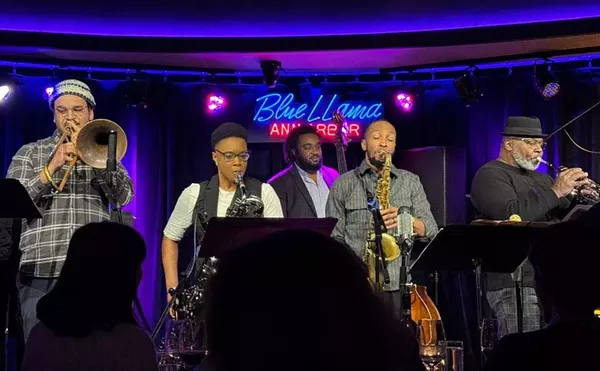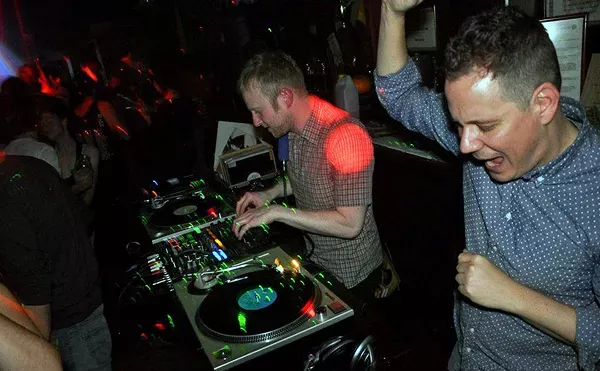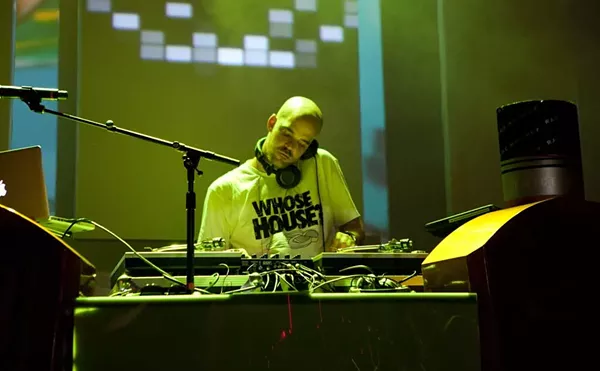"You know, your music sounds like mad clown music to me," Osby says she told him. "It’s like this three-ring circus, with all of these things going on at once that are completely unrelated to each other. You can hear all of the parts and components, but it’s just too much for people. You are going to have to strip it down. There’s too much buried beneath the monsoon."
Osby says that, at the time, the comment stunned him, even though he had long suspected that her enthusiasm for his music was less than total. But he tried to turn her stinging words into something positive.
"It made me think, ‘I know this woman is superintelligent, and yet she doesn’t get it,’" he says. "It helped me realize that I had to learn how to give people higher musical concepts in more measured doses, instead of bombarding them all at once. You just can’t do that. You have to meet them halfway."
Osby’s idea of meeting people halfway soon followed, and it turned out to be a breakthrough album for this bare-toned alto saxophonist and demandingly precise composer and bandleader. In some ways Banned in New York was the rawest thing he had ever released, with its homegrown recording technique (just two mikes hung directly over the band), track timings up in the radio-hostile 15-minute range, bootleglike album graphics and defiant title.
But here was a disc that caught Osby performing tunes people had actually heard of before. Here were certified chestnuts by Charlie Parker, Sonny Rollins and Thelonious Monk, originators from an earlier era whose music, once so ahead of the curve, was now at the exact center of the mainstream. And with these good old tunes providing some reference point for listeners too often baffled by Osby’s dense, almost impenetrable style, it was suddenly a little easier to dig what he was up to with his immensely sophisticated arrangements and improvisations.
Banned in New York sold quite a few records, at least for a Greg Osby disc. Greatly encouraged, Osby recently took another careful step toward wider acceptance; a few months ago he released The Invisible Hand, a gorgeous, lyrical effort that is deeply beautified by the presence of two veteran masters. One of them – the edge-dwelling pianist Andrew Hill – was no surprise. Hill, after all, had served as the house radical within Blue Note Records a couple of generations ago; moreover, he and Osby had worked together before.
But the ever gentle and mellow, albeit cerebral, Jim Hall? It’s not who you would expect to see pairing up with Osby, who for the past 20 years has either been leading his own big-bottomed, funk-based revolution, starting subversive collectives with the likes of Geri Allen, Steve Coleman and Cassandra Wilson, or siding for progressive monsters such as Hill, Jack DeJohnette and Muhal Richard Abrams. But Osby knew it was the right thing to do.
"To get into Jim’s arena," he says, "you have to deal with subtlety and coloration and phrasing and sound. He’s taught me a lot about space and brevity."
On The Invisible Hand this unlikely combo, completed by reedist Gary Thomas, bassist Scott Colley and drummer Terri Lyne Carrington, serves up the ultimate antidote to all the smooth baloney currently besieging the music. Osby’s new stuff is smooth, alright, but it is also truly soulful, deeply introspective music, as pretty and as meaningful as a postcard from an old friend visiting some exotic, faraway place you’d love to go to, if you only had the time, the money and the freedom of spirit.
Most stunning – and revealing – is the band’s take on "Jitterbug Waltz," a Fats Waller tune that’s almost as old as jazz itself. It clearly demonstrates, even to the most casual listener, Osby’s brilliance as an arranger and improviser. But, as the disc’s title implies, Osby thinks that brilliance comes from somewhere else.
"That title, The Invisible Hand, is reflective of these forces that seem to just guide me toward making the right creative decisions," he says. "It’s about having a musical conscience. You emerge from your creative space and look back and say, ‘Wow! How did I do that?’ But without being spooky about it."
Invisible or not, hand-picking Hill and Hall as senior sidemen was an inspired choice. Osby hopes other artists his age will take the hint that’s implicit in the session’s lineup.
"A lot of people in my generation would do well to heed people who made valuable contributions before us," he says. "Being observant in that sense will make for better music across the board. Too many people think they know it all."
In the past, Greg Osby may have been at least occasionally guilty of that himself. In the straight-talking Osby tradition, he’s careful to point out that, even with his new, more open musical attitude, he still maintains some very lofty goals for his music.
"I recognize what I do as a gift," he says. "I am merely a conduit. It is my obligation to share it with like-minded people. I’m always hopeful that they will get the same charge out of it that it gives me. I know it’s not for everyone, and I don’t intend to twist anyone’s arm.
"It is like a life force for me, it makes me want to be a better person and long for higher achievements and goals. That is what art is for. I get a charge out of other people’s art too, no matter what they do, when it is done at a high level.
"It is really a drag to have to endure mediocrity. The world would be a better place if everybody took what they did seriously."
Jim Dulzo is a veteran Detroit-area jazz broadcaster, critic and concert producer. E-mail [email protected]





